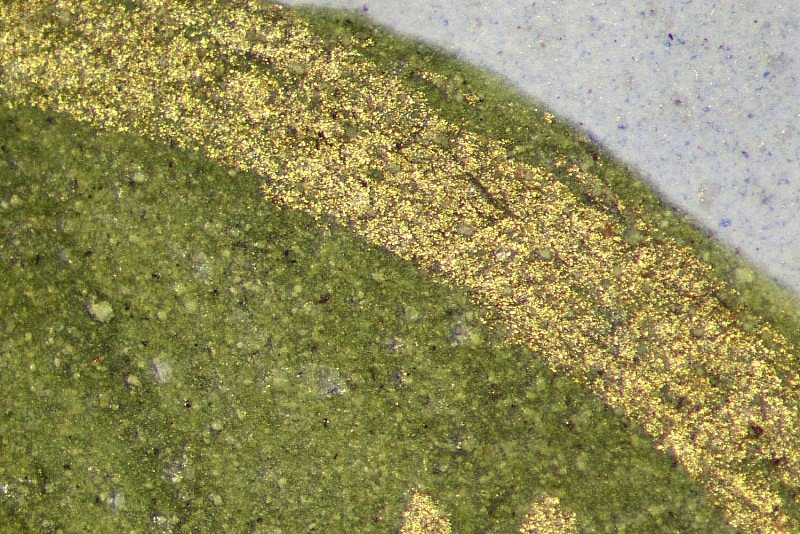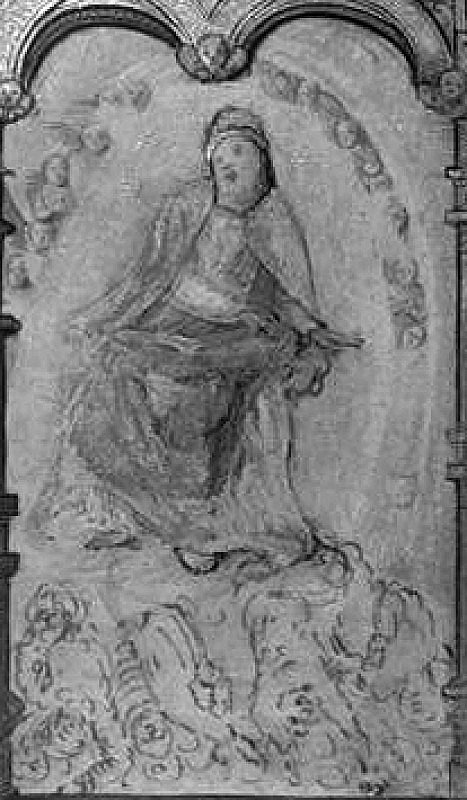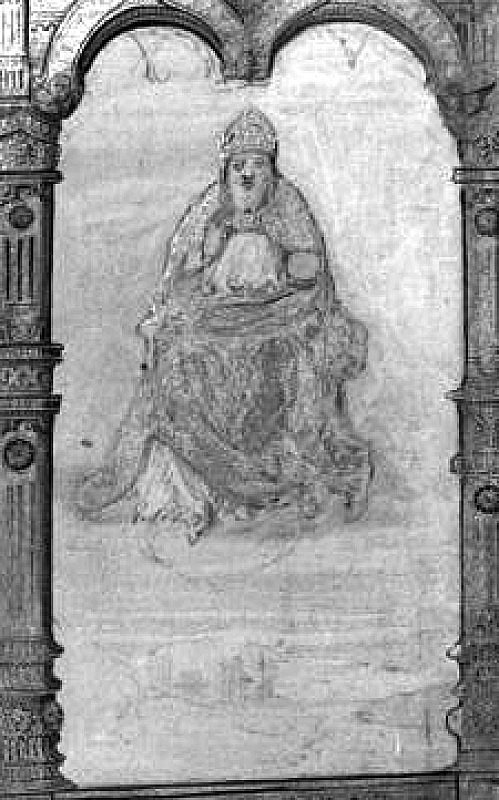Green mixtures
Artists' Materials
The wide range of green hues present in the manuscript’s landscapes, borders and architectural backgrounds was obtained with no less than six green mixtures.
Most contain one or more blue components (azurite and/or indigo) in addition to lead-tin yellow, orpiment or massicot. Coarse yellow particles are often visible in these areas under magnification, usually either within a dark blue indigo matrix or alongside bright blue azurite particles.
The green branches and leaves which decorate the border panels and line-fillers and surround the red and blue initials contain instead a mineral copper green, probably malachite, and lead-tin yellow. The latter is mixed with an organic green colourant in the light green tiaras worn by God the Father in some scenes and in the lozenges painted over the columns on fol. 3r.



God creating Heaven and Earth; God creating Angels; God creating animals and birds
The rectangular panel in the upper border above the text block shows the Arma Christi, the Instruments of Christ’s Passion (pincers, hammer, cross with crown of thorns, nails, lanterns, scourges, dice, whips, column with ropes, ladder, and rooster). It was customary for children to make the sign of the cross and to say the words In nomine Patris, et Filii, et Spiritus Sancti, Amen (‘In the name of the Father, and Son, and Holy Spirit, Amen’) before reciting their ABCs. Here, the cross of the Arma Christi extends into the text block, just before the A of the alphabet, to prompt Claude to perform this devotion.
The large brush strokes in the azurite blue sky of the upper right scene hide a pentimento, invisible even in the near-infrared image because azurite still absorbs light at these wavelengths (800-1000 nm). Infrared reflectography, however, reveals the presence of small pointed arches, and the different shape of the clouds below God the Father’s feet (hotspot 3).
